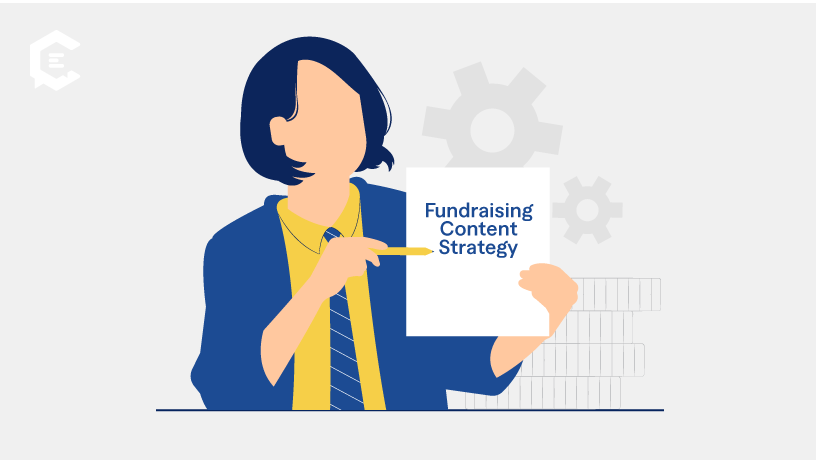Funding forms the backbone of private equity firms, and for these firms to secure the cash, they need to have a pretty good handle on their targeted investors. Limited Partners (LPs) and institutional investors top the list as the preferred investors for these firms, but that also means jumping through several regulatory and market-related hoops.
There’s also the challenge of aligning their interests with those of the potential investors, which can take a lot of convincing. So, how do these firms secure funding? Content forms a large component of the approach, as it can provide insight for investors into the private equity firm and address their most burning questions:
- Is there transparency?
- Is the firm trustworthy?
- Will this firm meet our investment objectives?
In this article, we aim to address just how content can help private equity firms secure the funding they need while addressing LP and institutional investor pain points.
Building Trust with LPs and Institution Investors
An important aspect of fundraising is that investors can scrutinize the potential asset, much like kicking the tires when buying a car. One of the ways to do this is through detailed and accurate reporting of the firm’s philosophy, strategy, and performance.
Clear, accessible content can cover these points effectively and uniformly across these firms’ various touchpoints with their investors. Some examples of this include:
- Investor Pitch Decks: These presentations are designed to address investor pain points and include critical information about the firm, such as the mission statement, investment strategy, case studies, successful exits, track record and experience of the team, leadership profiles, and essential information about alternative investment strategies that might interest investors with the same value, such as ESG investing. Pitch decks offer an opportunity to be transparent and to reveal what your firm’s mission and vision are. For investors, this reveals whether the firm aligns with their overall investment strategy.
- Financial Reports: These packs include a deep dive into the business’s finances, including quarterly and annual reports, market outlooks and projections, and important portfolio changes. Institution investors will find this especially valuable, as it will provide insight into the bottom line.
The information should provide a clear window into the firm’s operations and address investors’ concerns or questions.
Communicating Risk and Return Potential
All investors want to know what they’re getting into and whether the risk justifies the potential of the investment. For investors to bite, they need access to information clarifying their risk and possible loss positions.
- Performance Track Record: Firms can showcase their experience and past performance through a performance track record that includes the internal rate of return (IRR), multiple on invested capital (MOIC), distribution to paid-in capital (DPI), and more. For investors, this will show whether the firm knows which levers to pull to make money.
- Risk Return Scenarios: These scenarios are usually included in the pitch decks and reveal the worst-case, base-case, and best-case scenarios that a potential investment might garner.
- Risk Management Frameworks: These reports should reveal the firm’s risk mitigation strategies and the investment due diligence process. Investors want to know that the firm has done the legwork to identify possible risks. This can be included in investment guidelines and quarterly reports. An example is the Aladdin Risk framework used by BlackRock.
Highlighting Performance Insights Through Content Marketing
Think of this part of the content strategy as the firm’s brag book.
Showcasing Historical Performance
Past performance reporting can be done in several ways:
- Historical Performance Data: Bar charts are simple yet effective ways to present key metrics in a digestible format. Simply add them to pitch decks or financial reports.
- Portfolio Company Growth Metrics: These reports reveal investor data that allow investors to track revenue growth, EBIDTA, market share increases, and more. You can add these to pitch decks and financial reports and use some of the data in case studies and thought leadership pieces.
- Peer Comparisons and Benchmarks: Industry averages and rankings can let investors know how your firm compares to competitors. Tables, charts, comparisons, and market insights are examples of the types of content to include.
- Exits and Realised Returns: Deal-specific case studies and waterfall charts showcase exit multiples, IRR at exit, and capital returned to investors effectively.
When including performance data, it’s important to showcase the information in easily digestible formats such as graphs, infographics, and video content.
Providing Forward-Looking Insights
Investors want to know the firm’s position on the possible way forward. While the information is presented according to past performance metrics, firms can make their position clear by incorporating data, market fluctuations, and possible future scenarios that may affect the investment. Some examples include:
- Forward-Looking Statements: These statements predict future investment outcomes and are also called safe harbor statements. While not factual, they can give insight into the company’s predictions of possible future economic performance and potential revenue or income. Venable provides insight into their forward-looking statement for Safe Harbors.
- Thought Leadership Articles: The firm uses its top brass to make a statement through thought leadership articles about the possible future market conditions. Blackstone, for instance, regularly provides insightful thought leadership articles to cover tough financial topics and clarify their investment position.
Actionable ways to repurpose the content to make it more accessible across various platforms and media include blog posts, white papers, and webinars.
Using Thought Leadership to Attract LPs and Institutional Investors
Attracting investors can be tricky, considering the nature of the information and how easy it is to get lost in all the data. Ways to position your firm to garner more interest without compromising the quality of your content is through thought leadership and actionable educational content.
Establishing Authority and Expertise
One of the best ways to build trust and establish your authority and expertise in a financial market is by showcasing your in-depth industry knowledge. While reports and past performance can track the financial aspects of your growth, your thoughts and insights will reveal more of your firm’s values. This is a critical component of investing for investors, as they want to know they’re partnering with a firm that shares their interests.
Thought leadership comes up often as part of a content strategy, and with good reason. It gives you the opportunity to establish yourself as a trusted expert in private equity, how you can offer valuable insights on industry trends and market dynamics, and what you think the future might hold for investments. It also allows you to position your firm’s stance on current trends and how they affect how you address regulatory changes while taking advantage of opportunities.
Some ways to include thought leadership include interviews with the leadership, market commentary, and industry reports.
Engaging Investors Through Educational Content
It’s fair to assume that your potential investors already have the expertise to dissect IRRs and DPIs, and the key here is to educate them on the effect these have on the investment at hand. High-level education content should reveal your insight into complex financial concepts, industry shifts, and investment strategies.
Explainer videos, blogs, and interactive tools that provide this information will appeal to the sophisticated investor without undermining their expertise.
Content Strategies for Successful Fundraising Campaigns
Fundraising requires a content strategy that will address investor pain points and still be digestible enough to streamline the decision-making process.
Aligning Content with Fundraising Goals
Content marketing for fundraising can provide a clear roadmap for investors to follow without data dumping. In finance marketing, content needs to turn all those facts and figures into easily digestible information. Ways to align your content to your fundraising goals include:
- Understanding Your Target Audience: Ensure your content addresses their risk tolerances, investment preferences, and strategic interests. Case studies, reports, and thought leadership pieces can address these requirements.
- Highlighting Investment-Specific Value: Draw the investor’s attention to the investment areas you’re most interested in showcasing. Provide them with enough information to drive decision-making through content such as fund insights, white papers, and case studies.
- Showcase Data-Driven Performance: Show investors what they want to know about funds and assets’ past and possible future performance. These include charts, infographics, and dashboards.
These content types cement your firm’s approach to investment opportunities and address investor concerns.
Multi-Channel Content Distribution
It’s important to reach investors across various channels. However, the key to holding their interest is to create consistent content that affirms your values and position. Some of the best platforms to reach LPs and institutional investors include LinkedIn, email newsletters, and webinars.
Ways to leverage these platforms include:
- Your Website: Ensure that your site meets quality standards such as professionalism and fast loading speeds. But also pay attention to details such as the format of the content. An example of a good site layout is Baymark Partners.
- Email Marketing Campaigns: It allows you to target specific individuals in the decision-making chain and keep them in the loop on the deal’s progress. This also helps build trust through transparency in the process. Email campaigns should follow a content calendar to ensure that all the major pressure points are addressed.
- LinkedIn for Investor Engagement: Ensure that the firm’s LinkedIn page is completely up to date to remain relevant. Regular posts, insightful pieces, and content that drive engagement ensure your profile gets in front of more investors. A group that does this well is Apollo Global Management, Inc.
Measuring the Impact of Content Marketing on Fundraising Success
The old saying “what’s measured is treasured” also rings true for content management. Certain metrics indicate which content streams provide the most value for private equity firms.
Key Metrics to Track
Knowing which metrics to track is only part of the equation. It’s also about leveraging these metrics for better results and engagement with potential LPs and institutional investors.
- Know What to Track: It’s essential to note your content’s conversation rates, lead generation, and bounce rates. By analyzing this information, you can decide which levers require attention and where to sharpen your content strategy. Google Analytics and HubSpot provide tools to measure and refine your content distribution methods.
- Segment Your Audience: While LPs and institutional investors want to invest, they might not have the same objectives. For instance, you may want to address LPs through content that drives strategic partnerships and core values, whereas institutional investors might want to know more about the bottom line. Use social media metrics, email open rates, and lead conversion rates to better understand your investors’ needs.
- Analyse Investor Behaviour: Data analytics tools can help you know your content distribution better by analyzing how investors respond to your content. Salesforce, PipeDrive, Google Analytics, and LinkedIn Insights are tools used on various platforms to analyze this behavior.
Continuous Improvement Through Feedback
Understanding the needs of the investors doesn’t always happen face-to-face. While annual general meetings and investor meetings can help clarify specific pain points for investors, the digitization of the finance world makes this a little more complicated. A way to address this is through a content strategy that encourages user engagement. Ways to accomplish this include:
- Surveys and polls
- Emails and newsletters that provide a feedback prompt and mechanism
- Webinars and virtual events with live polling
- Private investor platforms with feedback functionality
Refine Your Fundraising Content Strategy
When LPs and institutional investors look for private equity firms to expand their investments, they want to know that the firm will align with their investment needs, goals, and strategies. Content plays a vital role in this as it helps private equity firms build trust, showcase their expertise, experience, and results, and the opportunity to be transparent.
A content plan can provide your firm with the necessary engagement tools to reach your ideal target market. Connect with a ClearVoice content specialist to see how we can help you with a concise content strategy.









